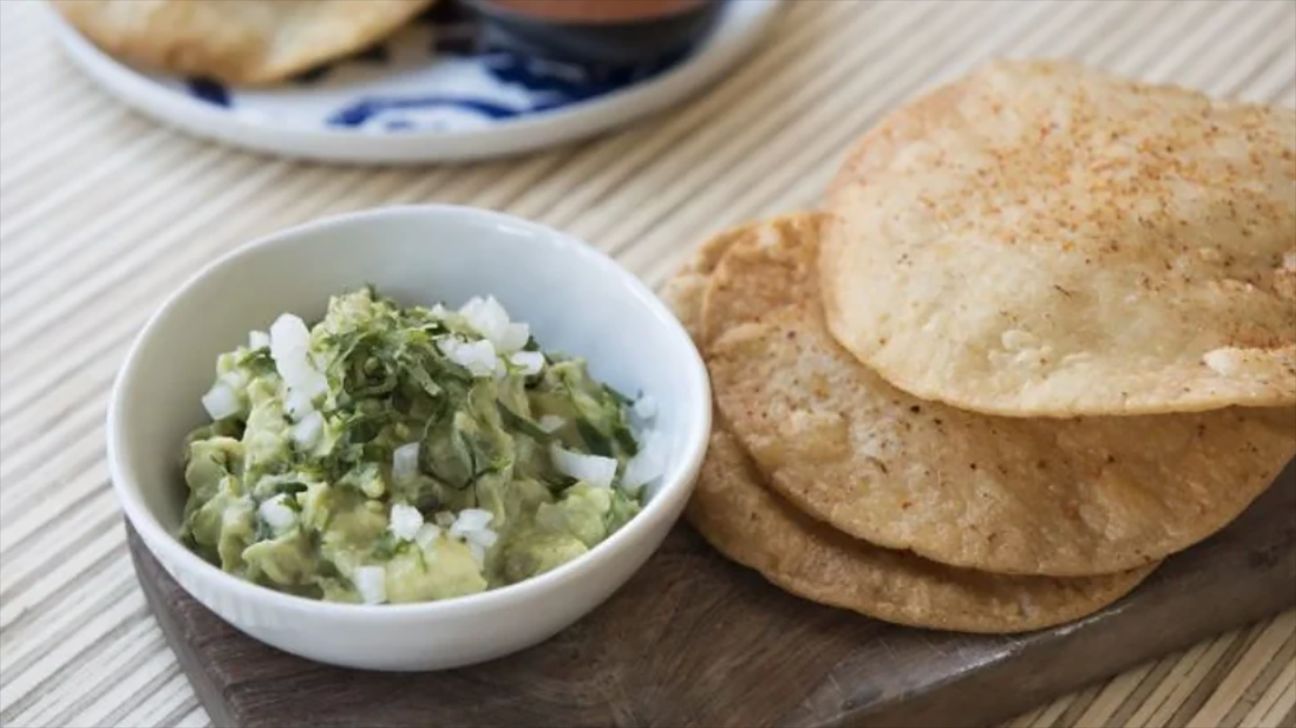This way to holy guacamole.
We’ve all experienced it before: Bad guac. Instantly disappointing and a surefire way to upset any meal or snack, it’s easily avoidable. In fact, serving up that creamy, bright green goodness that was sent to us from the avocado gods is easier than you think. Just avoid these five common mistakes the next time you serve guacamole:

Not choosing a ripe avocado is hands down, across the board, the biggest no-go zone when it comes to making and serving guacamole. “Hass from California or Mexico are best for guacamole because they have a higher fat content and a rich, creamy texture,” says Chef Scott Linquist of Coyo Taco, a fast-casual taqueria with locations in Miami. In terms of identifying ripeness, he says, “They should be dark brown to black on the outside and firm to the touch, but when you squeeze it, the flesh should give a bit.”
Ever had your guac turn that yucky greenish brown color and become mushy and flavorless? Yeah, us too. “The unpleasant brown color is caused by a natural oxidation process,” says Isaac Esparza, Executive Chef at Casa Velas resort in Puerto Vallarta, where they recently launched a Guacamole Bar offering guests 5,151 flavor combinations (!). To retain the bright green color and flavor, you can control or slow down the oxidation with the help of fresh lemon juice, olive oil, or powdered citric acid, he says.
Above all else, consider following the lead of restaurants that serve up tableside concoctions and prepare your guacamole only moments before you’re ready to scarf it down.
Seasoning is everything—even when it comes to guacamole, with many chefs agreeing that most folks just don’t add enough salt or lime, or both, to their recipes. “It is easy to under season since avocados are so rich,” says Chef Akhtar Nawab of Mexican eateries Otra Vez in New Orleans and Alta Calidad in Brooklyn.
Linquist tells us the salt and lime bring out the flavor and create a very nice balance, so it’s important you gradually add more of each and taste test along the way to get to your ideal version.
Qué frío! Many of our experts agreed on serving guacamole at room temperature vs. cold. The easiest way to make sure you’re doing this is by using ripe avocados that have been sitting out on your counter rather than in the refrigerator. “If you do happen to get stuck with extras after they are ripe, put them in the fridge and try to use them sooner rather than later,” says Nawab. Translation: More guac, sooner.
Not properly cutting, pitting and skinning an avocado to get the most out of it is a common mistake too. “You would be surprised how many people cut themselves trying to properly work with avocados,” says Linquist. To cut, he advises using a sharp kitchen knife with a blade between 5-8 inches. “Many people will choose a knife that is too large or too small, making this step dangerous,” he adds.
Once you have the right knife, cut into the avocado until the knife blade hits the pit. “Then, rotate the avocado around the knife, remove the knife, take the avocado in both hands and twist a quarter turn to separate the sides,” he says. “To remove the pit, hold the avocado half in one hand. Using a kitchen towel between your hand and the avocado, tap the pit gently with the sharp blade of a knife, then turn the knife a quarter turn to loosen the pit. The pit should stick to the blade of the knife and pull out easily.” Finally, Linquist advises using a large kitchen spoon to scoop out all the flesh of the avocado from the skin.
More Tips for the Best Guacamole Experience
Getting to peak guacamole is just half the battle. You can of course eat it by spooning it into your mouth—guilty as charged here—but we all know having the perfect vehicle to deliver it to your belly will make it all the more satisfying.
Think Beyond Tortilla Chips
“I personally love eating guacamole with yuca chips or taro chips,” says Linquist. “I also love it with kettle chips, especially the chile-lime and BBQ flavors.” For something healthier, crunchy romaine lettuce and Belgian endive make great vegetable scoopers; he also advises trying it with jicama, cucumber slices, celery, carrot, and bell peppers.
Be Generous with the Aromatics
In terms of spicing your guac up, both literally and figuratively, you can follow Nawab’s preparation, which includes serrano chile, onions, and cilantro. “Not adding enough vegetables to your guac is a mistake,” he says.
Get Creative with Mix-Ins Too
You can and should also consider adding interesting and unexpected ingredients to your guacamole. “Cut fruits like berries, mango, pineapple or add toasted nuts like pine nuts, almonds, or pumpkin seeds [to your recipe],” Linquist says.
Should You Refrigerate Guacamole? And Can You Freeze It?
“As in almost any food or preparation, it is always better when it is fresh,” says Esparza. But if you need to store guacamole, there are some tips to not totally destroy it. “If you have a homemade vacuum sealer machine, guacamole can be prepared—preferably without salt since salt accelerates the oxidation process,” Esparza says. “Place the guacamole in a vacuum sealed bag, refrigerate it, [or] freeze it, to [extend] its life. When you want to consume it later, defrost it, and then add the salt before eating it,” he adds.
If you do end up refrigerating some leftover guac, our experts advise storing it with a liner touching the surface of the guacamole itself to limit its air exposure.
And if you cave and buy store-bought stuff, here’s how to make pre-made guacamole taste better.
